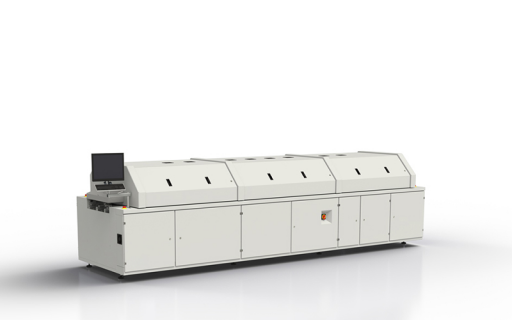Common knowledge of quality control in reflow soldering
Release time:2024-03-15Publisher:Jeenoce
Reflow soldering of basic components is a difficult step to control in the PCB assembly process. How to control the quality of reflow soldering during the soldering process? Let's analyze from each stage:
1、 Reflow soldering solder paste immersion stage
At this stage, the flux begins to evaporate, and the temperature should be maintained between 150 ℃ and 180 ℃ for 60-120 seconds, so that the flux can fully exert its function. The heating rate is generally between 0.3-0.5 ℃/s [8].

2、 Reflow soldering circuit board preheating stage
During this period, it is necessary to evenly heat the PCB and stimulate the activity of the soldering flux. Generally, the heating rate should not be too fast to prevent significant deformation of the circuit board due to rapid heating. We will try our best to control the heating rate below 3 ℃/s, with an ideal heating rate of 2 ℃/s and a time range of 60-90 seconds.
3、 Reflux stage
At this stage, the temperature has exceeded the melting point temperature of the solder paste, which dissolves into liquid and tin is applied to the pins of the components. The time for the temperature to be above 183 ℃ during this stage should be controlled between 60 and 90 seconds. If the time is too short or too long, it can cause quality problems in welding, and the time control of temperature between 210 ℃ and 220 ℃ is crucial. Generally, it is better to control it within 10-20 seconds.
4、 Cooling stage
At this stage, the solder paste begins to solidify and the components are fixed on the circuit board. The cooling rate should not be too fast, generally controlled below 4 ℃/s, and the ideal cooling rate is 3 ℃/s. Due to the rapid cooling rate, the circuit board may experience cold deformation and stress concentration, which can lead to issues with the soldering quality of the PCB. When measuring the temperature curve of reflow soldering, the measurement point should be placed between its pins and the circuit board. Try not to use high-temperature tape, but instead use high-temperature soldering to fix the thermocouple to ensure accurate curve data. Overall, PCB welding is a highly complex process that is also influenced by various factors such as circuit board design and equipment capabilities. If only certain aspects are considered, it is far from enough. We still need to continuously study and explore in the actual production process, strive to control the various factors that affect welding, and thus achieve the best welding effect.

